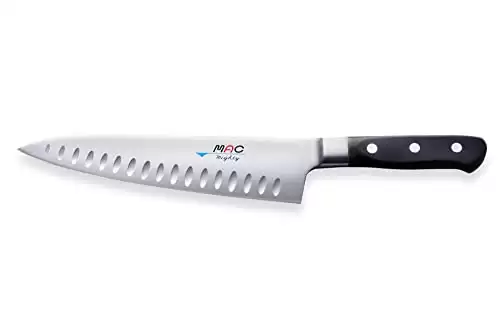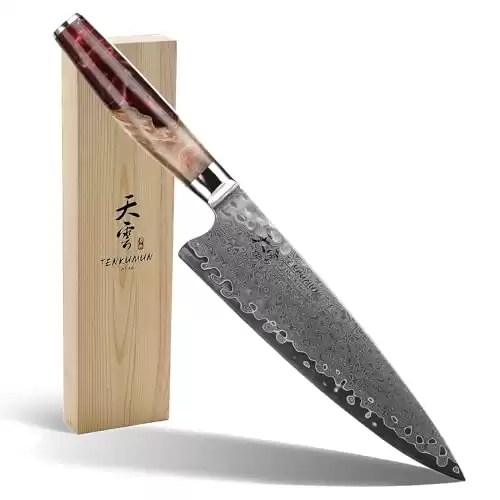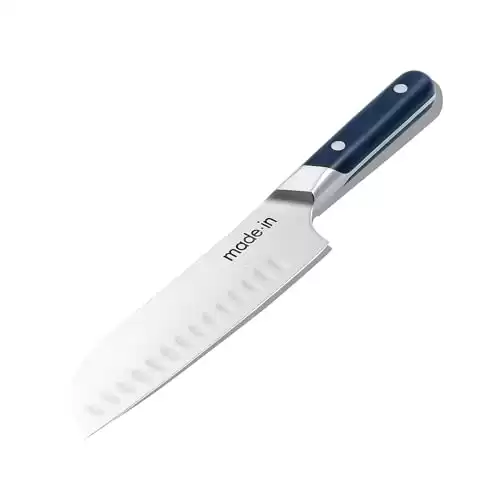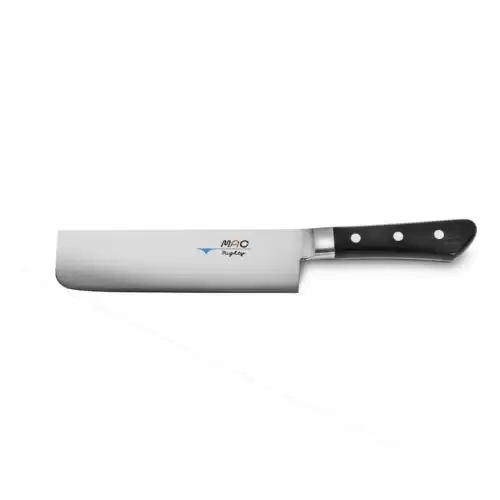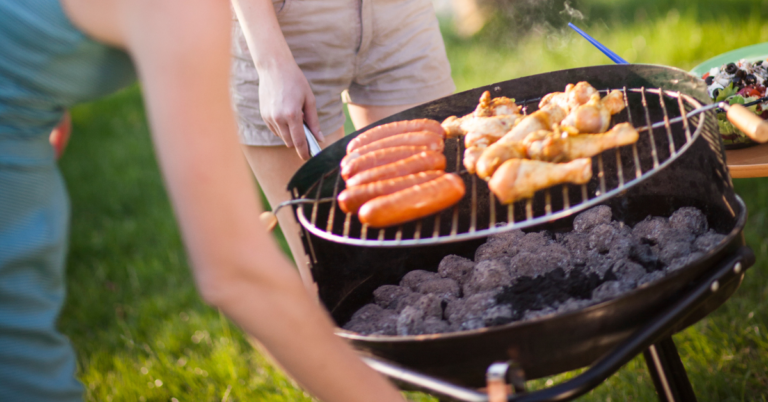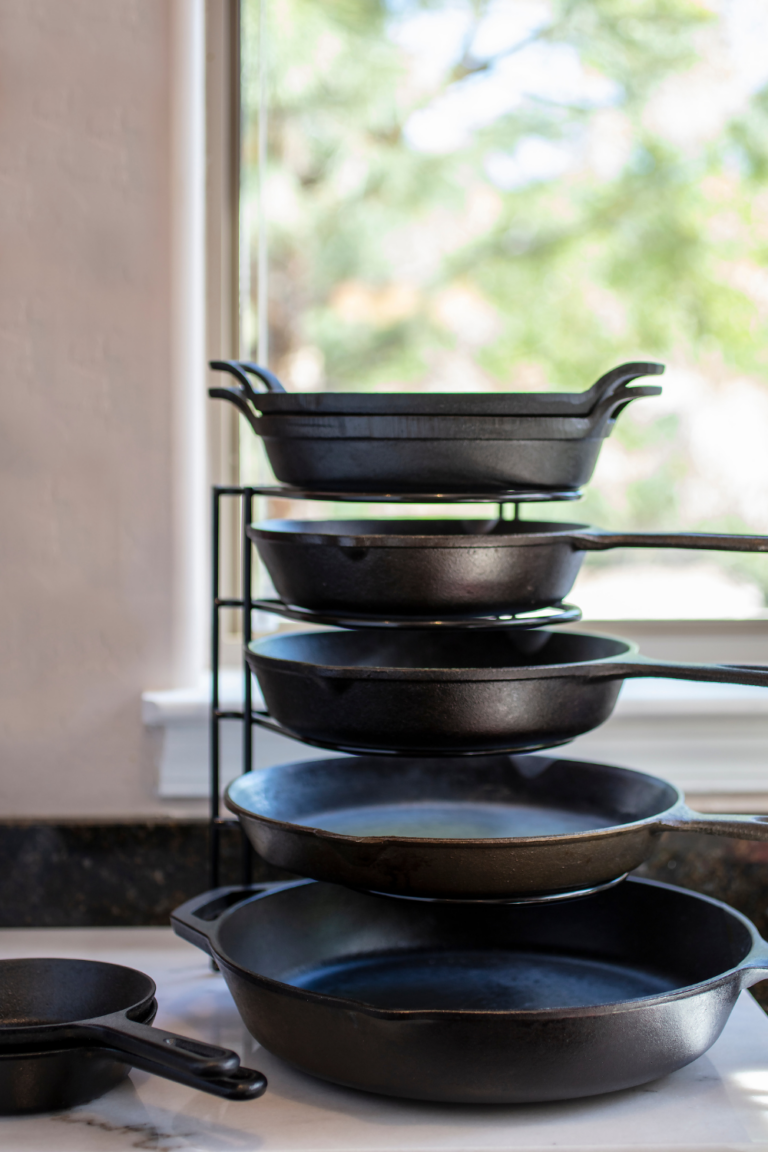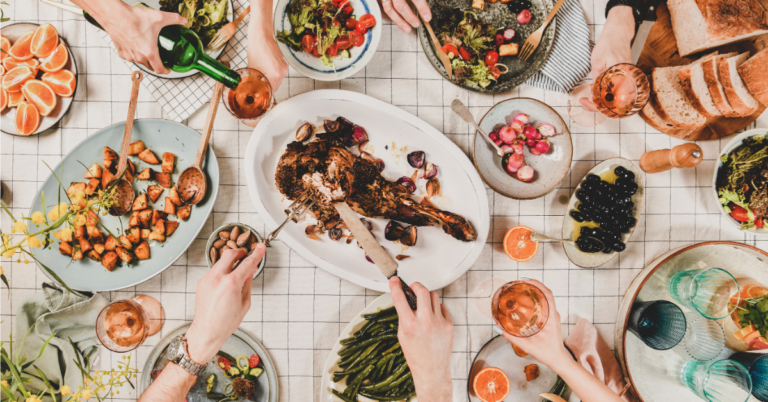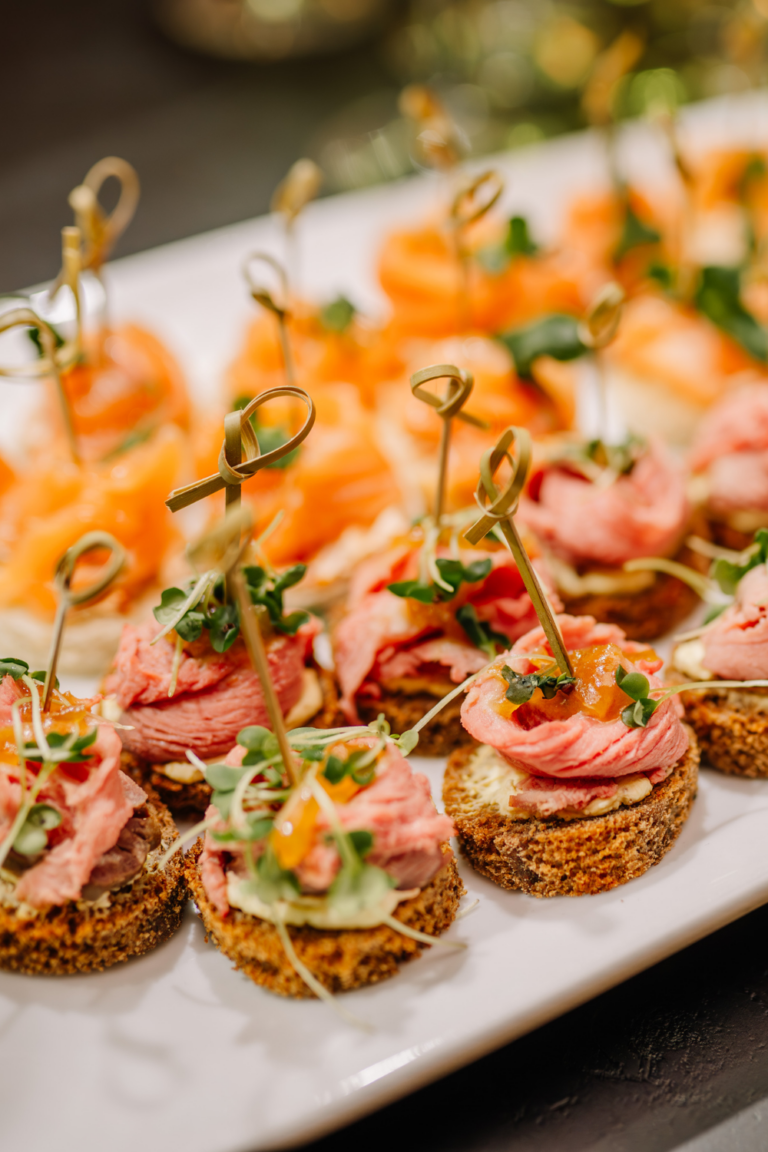This post may contain affiliate links, view the disclosure for more information.
This post is about how to improve knife skills.
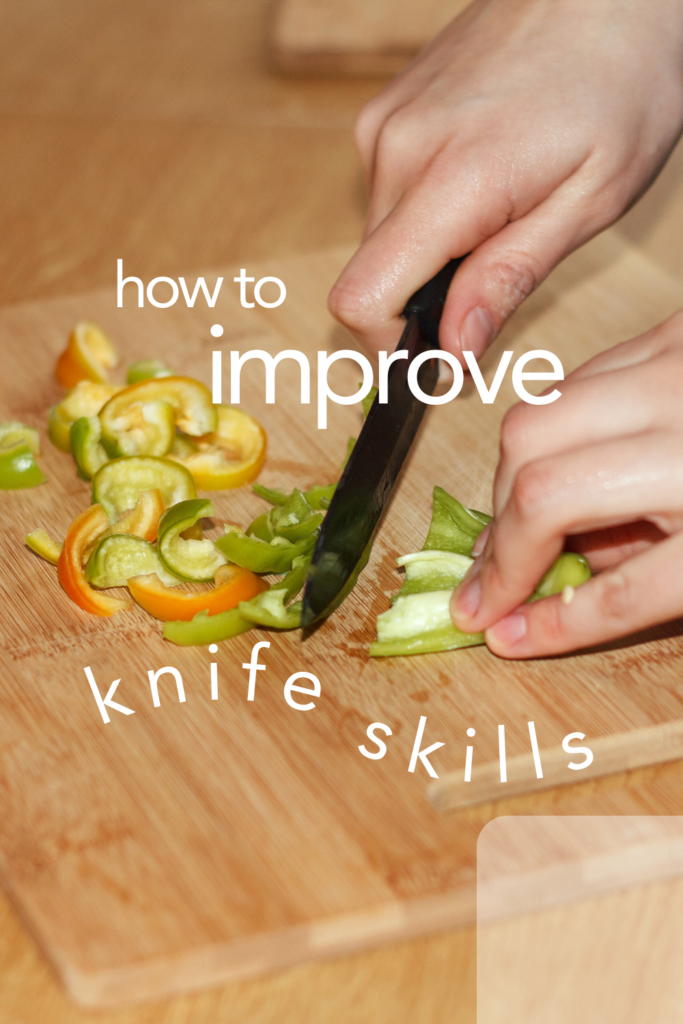
Everyone, chefs included, should always be working on improving your knife skills. The basis of cooking starts with a foundation of good knife skills. With strong knife skills, you become more confident in the kitchen and cook more efficiently. Having your ingredients cut uniformly can streamline the cooking process and make meal preparation more manageable.
When your mise en place is cut uniformly, your food cooks more evenly, which impacts your flavor and final presentation of the dish. For all these reasons, cooking can become a more enjoyable process when you have strong knife skills.
So, how can you develop excellent knife skills? As a chef instructor, I get this question almost daily from my students. In this comprehensive guide, we’ll explore actionable tips and techniques on how to improve knife skills, empowering you to cook with confidence at home.
Once you learn knife cutting techniques, how to use a chefs knife, and how to hold a knife— your knife skills will improve, and soon you’ll be cutting fast like a chef!
This post is all about how to improve knife skills.
HOW TO IMPROVE KNIFE SKILLS — KNIFE CUTTING TECHNIQUES
If you want to improve your knife skills, you first need to learn the four basic knife cutting techniques. Mastering dicing, mincing, chiffonade, and julienne knife cuts serves as the foundation for improving your knife skills. Therefore, it is important to know the difference between them.
How to Dice
Dicing is a knife skill that breaks down whole products into a small square or a cube. The overall size can differ, but generally, the three most common dices are small, medium and large dice. Depending on what you are preparing in the kitchen, the knife skill you will utilize will be different. For example, a small dice (a 1/4 inch cube) would be better suited for a sauté or a sauce. Whereas, a large dice (a 3/4 inch cube) would be more appropriate for roasted vegetables.
The best knife for practicing your dicing knife skills is a Mac chefs knife.
How to Mince
Mincing is a fine chop, into very small pieces. This knife cutting technique is best for ingredients very strong in flavor. Mincing ingredients ensures they will disperse evenly throughout your dish. Examples of ingredients that utilize this knife technique are garlic, preserved lemon and ginger.
The best knife for practicing your mincing knife skills is a Damascas steel chef knife.
How to Chiffonade
Chiffonade is a knife cutting technique used for large leafy greens. It involves you stacking the leaves together and roll them up tightly. With your knife, you can create small “ribbons” of the product with quick, even slices. Chiffonade is a knife skill that could be used for large leaves of kale or swiss chard. You can use this knife cut to create smaller more delicate ribbons of basil or mint as well.
The best knife for practicing your chiffonade knife skills is a Santoku knife.
How to Julienne
Julienne is a knife skill that creates small “matchsticks”, or long thin strips. These matchsticks are very small, at 1/8 inch in size. Knife cuts this small, also known as “precision cuts”, require the chef’s attention and showcase their skill. For this reason, precision cuts are done with the front portion of the blade. This allows the chef to see what they are doing more clearly. From a julienne, a chef can create a bruinose, which is the smallest dice, and typically used for garnishes.
The best knife for practicing your julienne knife skills is a Nakiri Knife.
HOW TO IMPROVE KNIFE SKILLS — CHOPPING, DICING, & CUTTING
Mastering chopping, dicing, and cutting knife skills will improve your efficiency when cooking in the kitchen. Almost every chef will recommend that you practice these knife skills with a large bag of potatoes or apples. There is always a concern about food waste when practicing and improving your knife skills. One of my favorite cooking tips and tricks is to use your scraps to create mashed potatoes or apple sauce.
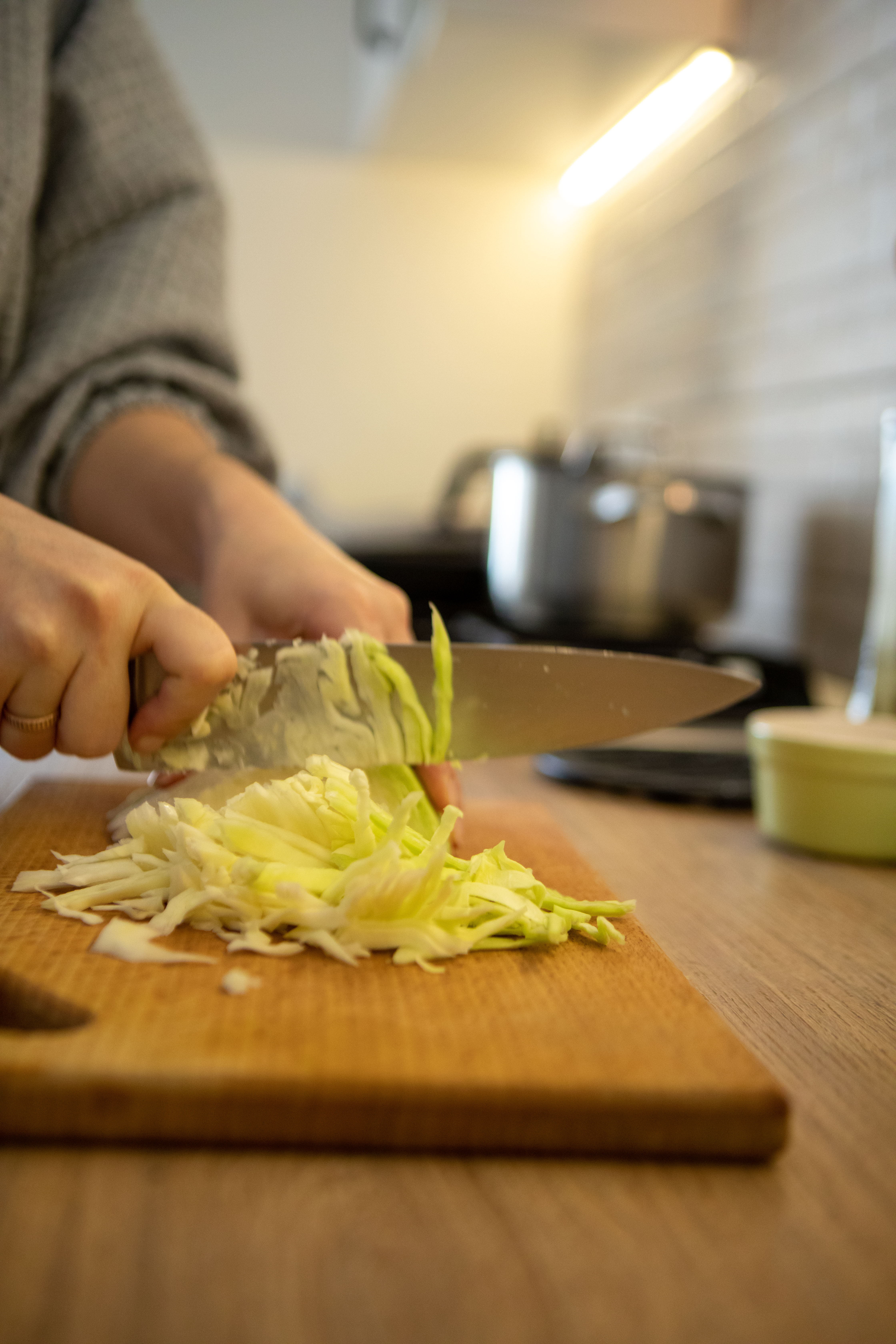
What is the difference between chopping and dicing? Chopping yields a rougher cut of ingredients, whereas dicing yields a more uniform and precise shape. If you were to read a recipe that asked for chopped onion, you would roughly chop to create chunks that are similar in size, but not in shape.
What is the difference between cutting and chopping? The term “cutting” in the culinary world is a verb, not an adjective. You would need more information on how to cut. For example, “cut into fine slices” or “cut into large cubes”.
HOW TO IMPROVE KNIFE SKILLS — HOW TO HOLD A KNIFE
There are many different ways to improve your knife skills, but starting with the correct way to hold a knife is paramount. The safest way to hold a knife is with a pinch grip, which is the way that all chefs hold a knife.
First, grip the knife with your dominant hand, firmly but not too tightly that you end up white-knuckling the blade. A firm grip will maintain control over the blade, minimizing accidents in the kitchen.
Next, “pinch” the blade by placing the spine of the blade in between your thumb and index finger, and holding the blade in between your finger and thumb pads near the heel of the blade. Your remaining three fingers should wrap around the handle of the knife for stability. By utilizing the pinch grip method when learning how to hold a knife, it becomes much easier to improve your knife skills.
All of this to say, be sure to find a chefs knife that works best for you. Test out several knives to see what knife is most comfortable for you to hold. I always love to recommend this chefs knife, as it is made from lightweight Japanese steel and holds a sharp edge.
HOW TO IMPROVE KNIFE SKILLS — HOW TO USE A CHEFS KNIFE
Learning how to use a chefs knife starts with the “three finger knife rule”, which is a safety guideline for knife handling. It helps to minimize the risk of cutting your fingers when using a knife to prep food.
The 3 Finger Knife Rule
First, curl your fingertips slightly on the non-dominant hand to create a bear claw, before bringing your fingertips inwards towards the palm of your hand. Next, position your thumb and pinky finger on either side of the product you are cutting, creating a firm grip and holding the product steady. Finally, bring your knife to your knuckles, using them as a guide for your slices.
Never allow the knife to leave your knuckles. This will maintain control over the path of the knife, creating clean, even knife cuts, improving your knife skills. By following the three finger knife rule, you reduce accidental cuts by keeping your product stable and your fingertips safely out of the way of the blade.
A majority of knife work is done with the middle and back of the blade, because this section of the blade is closest to you. When you use the section of the knife that is closest to you, you have the most control over your knife cuts, creating precise slices.
HOW TO IMPROVE KNIFE SKILLS — HOW TO CUT LIKE A CHEF
Now that we have uncovered the correct way to hold a knife and use a knife like a chef, we get to uncover the mystery of “How do chefs cut so fast?” The answer is simple: because the knife never leaves a chef’s knuckles, the tip of the blade never leaves the cutting board. This allows the chef to cut in a quick rocking motion with the knife.
The rocking motion is propelled with your elbow, which will push the knife forward. The wrist glides the knife up or down, but the shoulders remain steady and squared off, facing forward. Keeping your elbows tucked in and close to your torso allows you to have more control over the knife as well, as you find steadiness in your center of gravity. By combining a rocking motion, pinch grip, three finger knife rule together, you can improve your knife skills and use the knife to cut like a chef.
This all of course takes practice, and may not come as naturally as chefs make it seem to be. However, working towards improving your knife skills can add long-term value to your cooking abilities. Improving your knife skills compounds overtime, by improving efficiency in the kitchen, allowing you to accomplish more in less time. Every home cook’s goal is to enjoy cooking more, and when improving your knife skills becomes easier over time, your will!
HOW TO IMPROVE KNIFE SKILLS Q&A
What should I practice knife skills on?
Most culinary students grab 10 lbs of russet potatoes or apples to practice improving their knife skills on.
How can you develop excellent knife skills?
Focus on technique! Even when attempting to hold the knife with a pinch grip, or utilizing the 3 finger knife rule — if it feels uncomfortable because you are used to holding the knife a different way, keep practicing!
What is the importance of knife skills?
There are many reasons, but knife skills are important for creating efficiency in the kitchen. Good knife skills help you stay safe by holding the knife correctly, as well as creating better tasting and visually appealing food when your ingredients are cut uniformly.
How to practice knife skills without wasting food?
You can practice your knife skills on apples or potatoes, and use that product to make a large batch of mashed potatoes or applesauce. You don’t need to worry about messing up because you can simply cook down everything and either mash or puree it!
What are the 5 basic knife skills?
Slicing, dicing, chopping, mincing, and julienning are the 5 basic knife skills that provide a foundation of all other knife cuts.
What’s the best way to improve knife skills?
The best way to improve knife skills is to practice! You can practice on your own at home, or take a knife skills class with a local chef.

